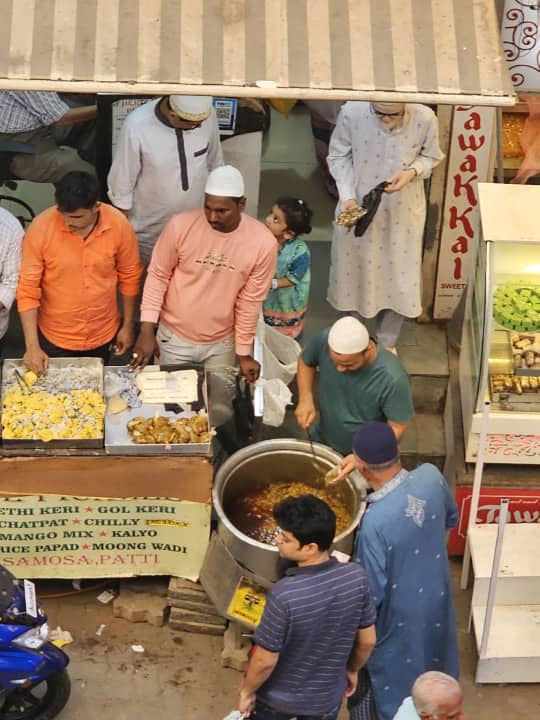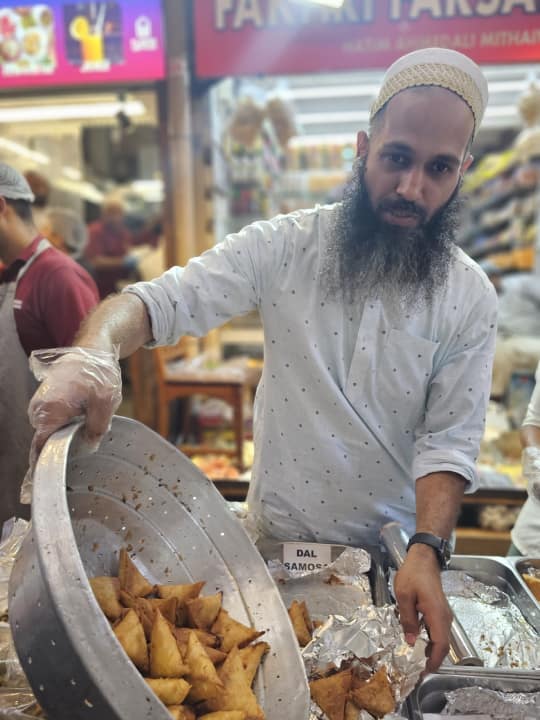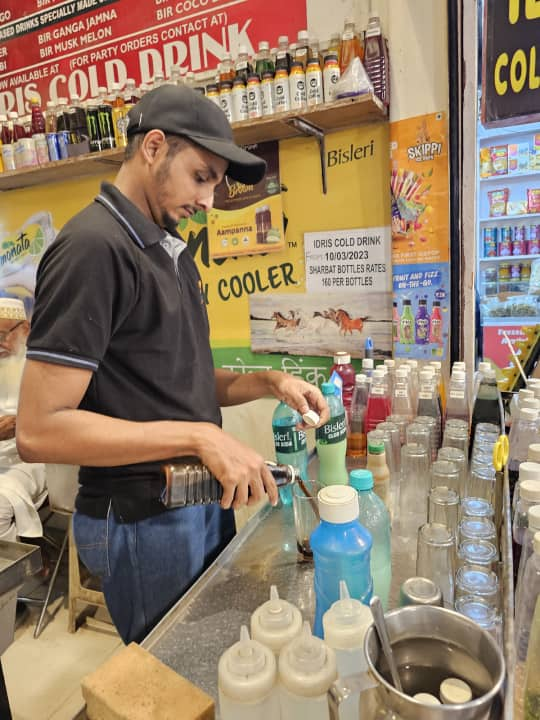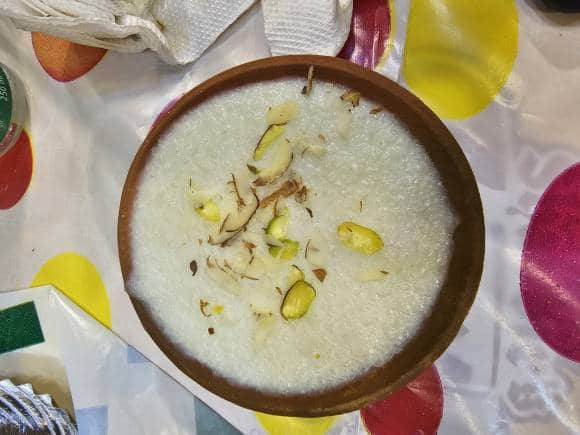



If you have lived in Mumbai, there's a good chance you have at some point driven past the Bhendi Bazaar-Mohammed Ali sprawl. Like me, you may have rolled down the windows to take in the smells — of kebab being made or the sight of white and yellow kesar phirni lined up along the glass shelf, and the scent of jasmine and rose flowers being sold on street corners.
Most Mumbaikars, and tourists to the city, have at some point made their way through Bhendi Bazaar during Ramzan, to partake in the fast-breaking iftar served every evening of the holy month. So, it was a Ramzan Heritage Walk and Iftar that drew me to Bhendi Bazaar. But also there was the added lure of exploring what is one of India’s biggest urban renewal projects, spearheaded by the Saifee Burhani Upliftment Trust (SBUT).
The transformation
Ten years ago, when I first visited the neighbourhood on a Ramzan food walk, the eateries serving traditional delicacies were everywhere. But there were also piles of garbage on street corners, though admittedly never in front of the eateries. You encountered a sea of humans walking and driving past, nudging you out of the way as they hurried along.
The neighbourhood has changed visibly changed. SBUT’s Murtaza Sadriwala says, “The roads are being widened to 18 metres, we have implemented a garbage disposal and sewerage system under the Bhendi Bazaar redevelopment plan, and the eateries are housed in a street-level plaza setting.” In the new improved Bhendi Bazaar, there are garbage bins next to the stores, there is space to walk, and nooks where you can sit and eat.
It may not seem as swish as European cafes with outdoor dining areas, but the dining plaza is a first for India. A lowdown of what my companions and I ate in Bohri Mohalla (dominated by the Dawoodi Bohra Muslims):
Patra Biryani at Firoz Farsan
The distinct Bohri cuisine combines aromatic Awadhi-inspired gravies and elements of Gujarati cooking, a blend that comes alive in Patvelia or Patrel or Patra Biryani.
Interestingly, there is no rice in this biryani. The Gujarati staple Patra (made of cocoyam leaves) is combined with mutton boti or kheema. Saiffuddin Ujjainwalla, the proprietor and part-time cook, explains: "The patra comes from Bassein or Virar. The dough is made with channa atta, green chillies, garam masala and kneaded in tamarind water. The leaves are smeared with this paste, neatly rolled, folded on the sides, and boiled for an hour. Meanwhile, the mutton or chicken is fried in a vaghar of garam masala, red chillies, ginger, and garlic, with methi tadka on top. The boiled and rolled patrel is cut into round slices and added to the meat, and methi bhajias crumbled into the dish to thicken the gravy.”
To me, this delicately spiced dish, which is served only till 7 pm, is a full meal but to most, it is a starter to a Bohri meal.
 (Photo by Deepali Nandwani)
(Photo by Deepali Nandwani)
Kheema Samosa at Fakhri Farsan Mart
We follow it up with crisp kheema samosas and mawa samosas, served hot right from the kadai to your plate, at Fakhri Farsan Mart in the lane behind. The 72-year-old farsan shop is run by Fakhruddin Mithaiwala. His grandfather Ahmedali Dosaji Mithaiwala invented salam pak, a sweet made of gond, mawa and ghee.
 Kheema Samosa at Fakhri Farsan Mart. (Photo by Deepali Nandwani)
Kheema Samosa at Fakhri Farsan Mart. (Photo by Deepali Nandwani)
Rimzim at Idris Cold Drinks
The next stop reminds me of my childhood with its array of homemade sherbets that are served in a glass filled with ice. There is the popular Kala Khatta, Variyali (a kiwi-green drink made with saunf or fennel) and the Idris Special, a cranberry red sherbet with spices. My favourite, though, is Rimzim, a masala drink with jeera and spices, which is perfect for digestion. The homemade sherbets are also available in flavours such as kesar, elaichi, strawberry or mango flavours, besides unusual ones such as Mellon Pipe, Aqua Blue (made from pea flowers) and Oreo!
 Idris Cold Drinks in Bhendi Bazaar. (Photo by Deepali Nandwani)
Idris Cold Drinks in Bhendi Bazaar. (Photo by Deepali Nandwani)
Nalli Nihari, Egg and chicken roll and Bada Handi at Shabbir’s Tawakkal Sweets
Don’t get taken in by the ‘sweets’ in the name. Shabbir’s Tawakkal is a sweet shop but during Ramzan, it serves traditional Bohri dishes such as Bara Handi, Nalli Nihari, Egg and chicken/mutton roll, and malpuas as big as quarter plates.
Moayyad, the third-generation mithaiwala who runs it now, talks about how his great-grandfather, who unsuccessfully ran a shoe business from these lanes, began a mithai shop on the advice of High Priest Syedna Taher Saifuddin. His fortunes turned and what was once a small shop selling three dishes – dahi wada, boondi and jalebi, went on to become one of Mumbai’s finest sweetmeat stalls.
Interestingly, Tawakkal, in a bid to woo both vegetarians and health-conscious, also serves a few paneer and vegetarian dishes during Ramzan, besides sugar-free phirni.
I ordered a delicately spiced Nalli Nihari served with mildly sweet Kashmiri bread called Sheermal that’s baked with a little sugar and dates-flavoured milk. While Surti 12 Handi is famous for its Bara Handi, I would recommend Tawakkal’s for the denser, flavourful and rightly spiced version.
Bara Handi derives its name from the 12 handis or vessels sunk in the ground, each with a different ingredient — nihari (stew), two vessels having payas (mutton trotters), pichota (the rump of the animal and the tail), sookha (thicker cut of meat with gravy) and nalli (bone marrow). The contents of all 12 handis are mixed to make one spicy, meaty dish.
I ended the meal at Tawakkal with mango phirni and the huge Malpua topped with cream.
 Phirni at Tawakkal in Bhendi Bazaar. (Photo by Deepali Nandwani)
Phirni at Tawakkal in Bhendi Bazaar. (Photo by Deepali Nandwani)
Hand-churned ice cream at Taj Ice Cream
My last stop on this heritage food stop is the century-old Taj Ice Cream, which continues to hand-churn them, a process that takes three hours for a single batch. The store blossomed from a simple business set up in 1887 by Valilji Jalaji, who arrived from Kutch and started selling fruits and milk mixed in an earthen pot. While Taj Ice Cream serves seasonal varieties such as jamun and mango, my favourite is the guava ice cream with chunks of delicious guava fruit.
 Taj Ice Cream's hand-churned desserts. (Photo by Deepali Nnadwani)
Taj Ice Cream's hand-churned desserts. (Photo by Deepali Nnadwani)
The pleasure of a Ramzan feast in Bhendi Bazaar lies as much in the renewed neighbourhood as in the food. Though bustling during the spiritual fasting month with both residents and ‘outsiders’, there is now space to sit and gossip as you wait for your meal, gawk at the food as it comes out in courses, and speak to the lovely, giggling young girls who particularly manage and serve at Tawakkal, another milestone in this changing neighbourhood.
Discover the latest Business News, Sensex, and Nifty updates. Obtain Personal Finance insights, tax queries, and expert opinions on Moneycontrol or download the Moneycontrol App to stay updated!
Find the best of Al News in one place, specially curated for you every weekend.
Stay on top of the latest tech trends and biggest startup news.